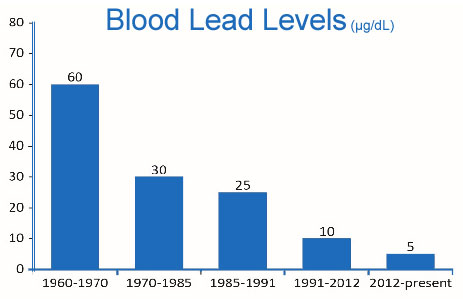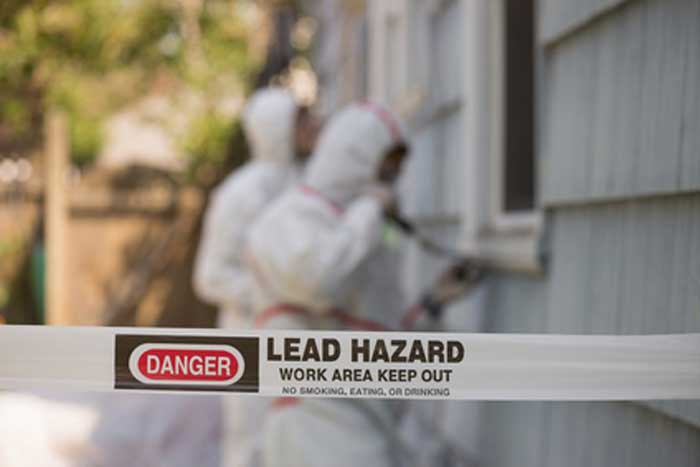Lead is a dangerous heavy metal that was, for many years, used as an additive in paint. It was added to pigment the paint, its ability to dry paint quickly, its ability to keep paint durable, and its ability to resist moisture. The problem with lead-based paint is that when it is inhaled or ingested, the results can be deadly, especially for children, the elderly, and those with weak immune systems. In 1978, lead paint was banned, but many older homes and buildings still have the original paint, which is loaded with lead. Lead has also been found in children’s toys, which poses an even greater danger.
Although reductions in lead exposure for the U.S. population have resulted in lower blood lead levels (BLLs) over time, epidemiological studies continue to provide evidence of health effects at increasingly lower BLLs [AAP 2016, NTP 2012].
Bottom line, lead is dangerous and toxic at even very low levels.

Symptoms of Lead Exposure in Children
Children who are exposed to lead, particularly those under the age of six, can experience behavioral and developmental problems as they get older. Even higher exposure to lead can cause abdominal pain, lethargy, constipation, agitation, loss of appetite, and even seizures. If you think your child may have been exposed to lead, your doctor can do a blood test. The next thing you’ll want to do is hire a certified lead removal expert to properly remove the lead from your home.
Home Renovation and Restoration Dangers
The greatest lead exposure danger comes from renovating older homes and restoration after water or fire damage.
Lead-based paint was all that was used in older structures, but because of its health dangers, the U.S. government (OSHA) banned the use of lead in paint in 1978. Removing lead-based paint on your own is very dangerous because when you are sanding or scraping it away, lead particles and paint chips are released, which can be inhaled. Hire a certified professional before undertaking lead removal. They can test for lead paint in:
- Exterior surfaces
- Trim
- Baseboards
- Porches
- Columns
- Window sills
- Railings
- Stairs
When it’s time to renovate or you’re taking on a restoration project, it’s crucial that your contractor is certified in lead-based paint removal. This is even more crucial if your home or office was built before 1978. They have equipment to test and remove lead from your building safely.
Lead Paint in Toys
Many toys are still made with lead-based paint, particularly those that are made in China. Even though the danger is not as high as with the paint in your home, there is still a threat. Children tend to put toys in their mouths, and when this happens, the paint has a tendency to chip. Once ingested, serious stomach and intestinal problems can occur. If you suspect your child’s toys have lead-based paint, dispose of them. Because of the media attention of lead-based toys in recent years, parents are more aware and tend to buy toys from companies they know and trust. If worse comes to worse, and you believe your child has ingested lead-based paint from his toy, take him to the doctor for a lead poisoning test.



Leave A Comment